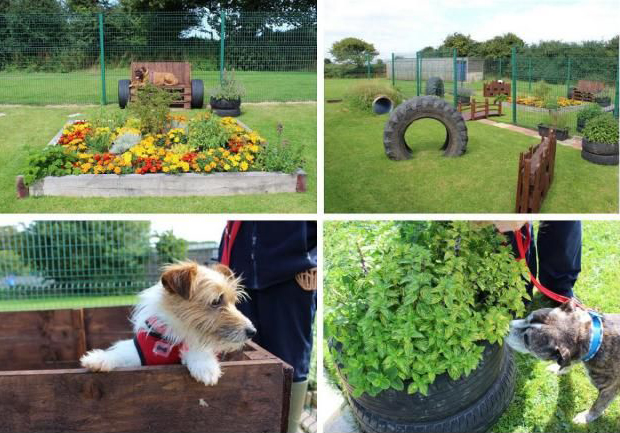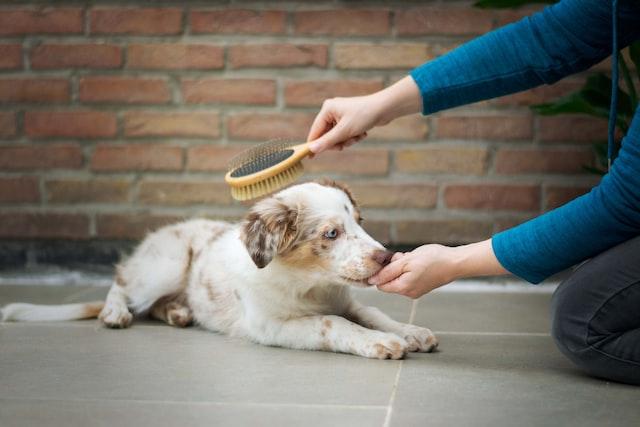Moving anxiety can stress out even the most even-temperamented pet. You’ve just taken everything they thought they knew about the world and turned it on its head, especially for furry friends who stay indoors or in a backyard.
“What do you mean there’s a world outside the front door?”, says your lazy house cat.
You can help them overcome the fear by taking some simple steps to decrease anxiety during the move.
1. Take Your Pet for a Ride
If you’re traveling cross-country, then your friend may have a long trip ahead of them. And the length of that trip may increase your pet’s anxiety. This can be especially hard on them if you rescued them from abuse or abandonment.
“Where are you taking me, Mum? Will I ever see you again?”
To help alleviate some of the stress and reassure your furry friend you’re not leaving them anywhere, start taking short trips in your car. Use treats to get them into the crate or car if possible, and give treats once they’re in the car.
Then drive around the block a few times and come home. Show them that car rides can be fun. They don’t always mean you’re going to the vet or leaving them somewhere.
2. Introduce Them to a Room, Not a House
Wide new spaces are frightening to pets who spend most of their time indoors. The new home smells strange to them. Cats and dogs are largely driven by scent.
“Where’s my scent? Why do I smell another dog or cat?”
It helps if they can get used to one room first. Make sure this room has everything they need, including lots of familiar items like:
- Their food dish
- Their usual pet bed
- An unwashed blanket from your old house
- Old toys
- Litter box
These items will smell like them and provide comfort while they’re getting used to the new scents.
The longer they’re in this room, the more it smells like them. And it doesn’t have to be more than a couple of days. But please do visit often, so they know you’re with them.
3. Don’t Let Them See You Unpacking
Another reason for getting used to a smaller space first is that the house moving process can be very stressful.
You may have movers coming in and out, leaving the door open and slamming boxes down. That’s a lot of racket for a pet’s sensitive ears. And they may run right out the door as you’re walking in with a big box you can’t put down in time.
Ideally, you should move in completely before you bring your pet into the home. That way, the home already looks and smells somewhat familiar.
4. Update Their Chip
A surprising number of pets run away or get lost after a move. That’s very stressful. If you haven’t chipped your pet, consider taking them to the vet to get this tiny, permanent ID inserted under their skin.
It will have all of your contact info on it. Most vets and animal shelters will have the tool to read it. You can also go the old-fashioned route and get the tags. But make sure these have your new address on them to avoid confusion.
5. Don’t Let Them Out in the Car
Even if you have a long drive ahead of you, it’s usually a bad idea to let a pet out of their crate in the car–unless they’re very accustomed to riding.
Not only might they have accidents in the car, but they could also get overactive and cause an accident. That would cause a lot more stress than just leaving them in the cage for a few hours.
Make sure they have access to fresh water. And if it’s a long ride, try to take them out on a leash periodically. But be aware that because of the inherent stress they’re under, they may run away from you as a rest stop and not respond when you call as they might at home.
6. Try Herbal Supplements
Some herbal supplements can help reduce anxiety in pets. Some that have been shown to help dogs and cats with anxiety include chamomile, valerian, and St. John’s Wort. And, of course, catnip helps cats.
Be careful with herbs, and always speak with your vet first. Some innocent and effective herbs on humans can be toxic to pets. For example, the scent of lavender can calm cats. But it will also make them very sick if they lick it or inhale too much of it.
And keep in mind that your cat often reacts to your stress levels. So you need to manage your own moving stress. While we won’t recommend you give your pet marijuana to reduce stress, you can certainly check your local dispensary in Tucson to find strains that support healthy stress responses.
7. Talk to Your Vet
If you have a particularly anxious pet, be sure you talk to your vet. They may prescribe anti-anxiety medications that you need to start giving them 1-2 weeks before the move to be effective.
Doing so can decrease anxiety for both you and your pet.





